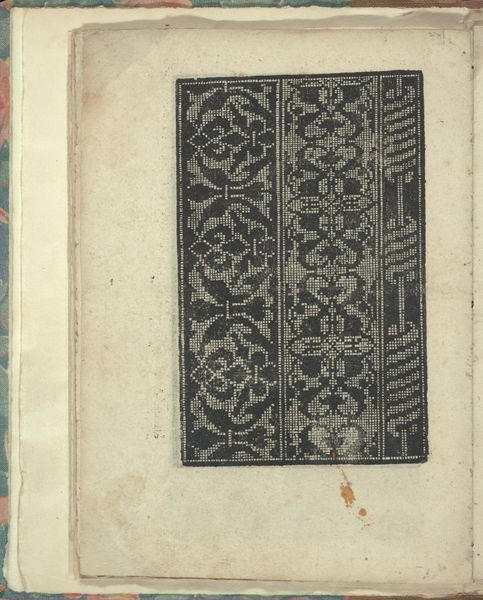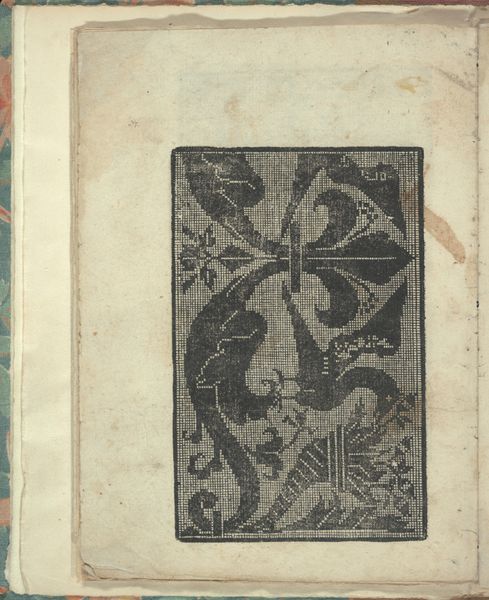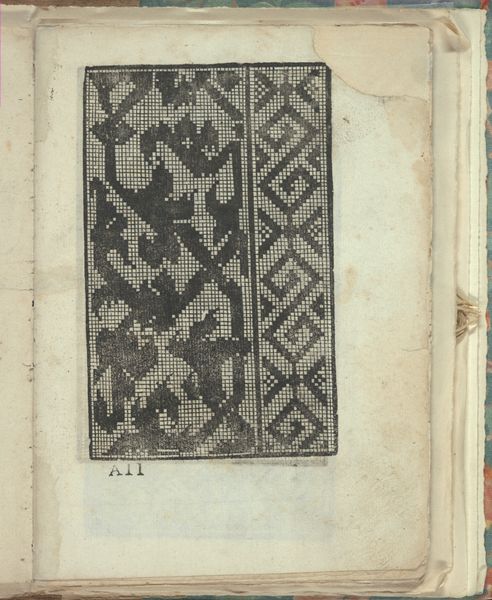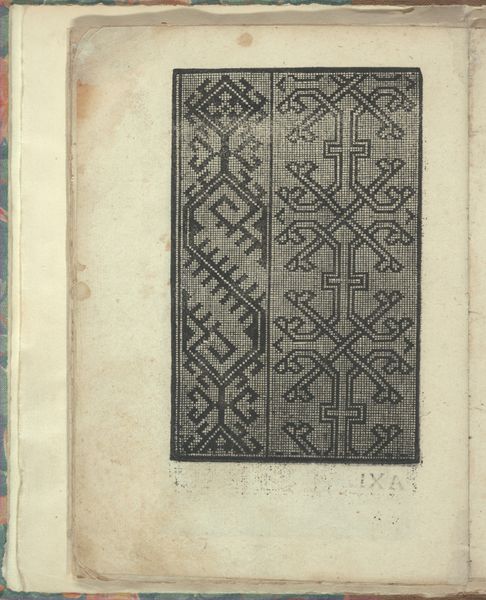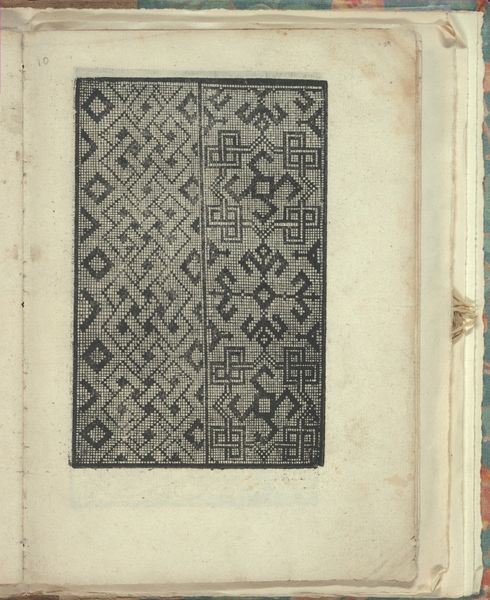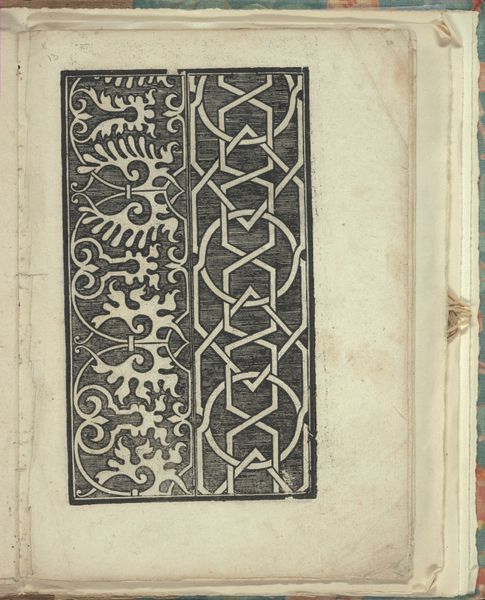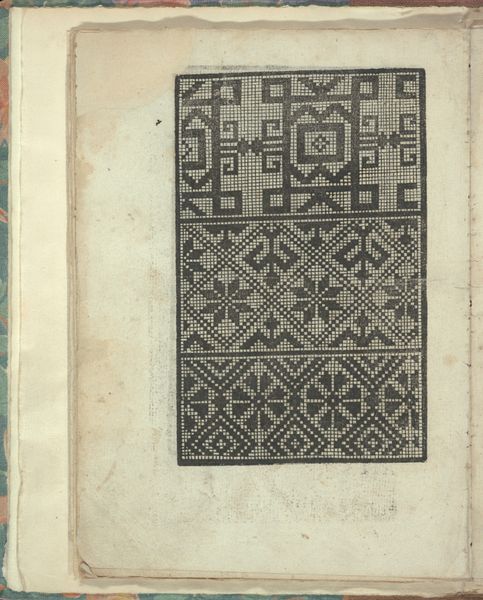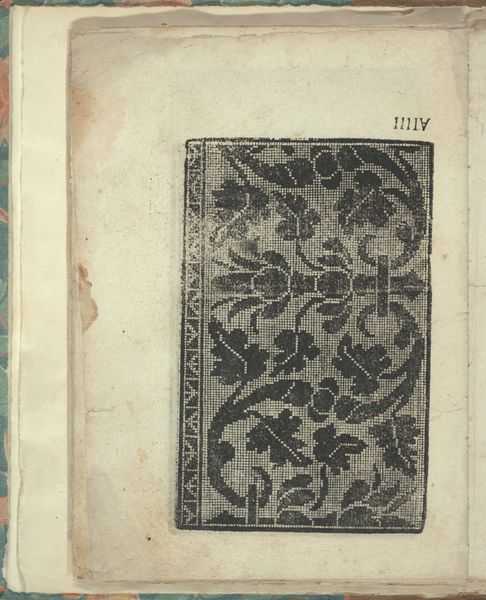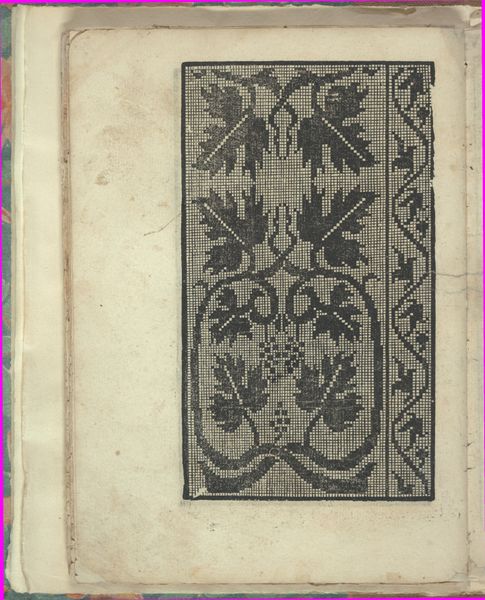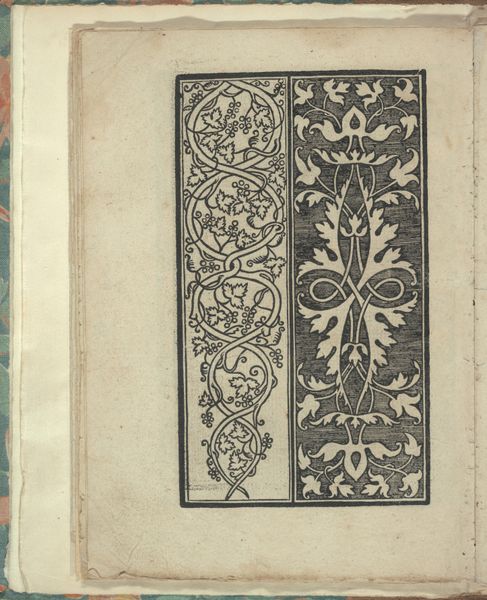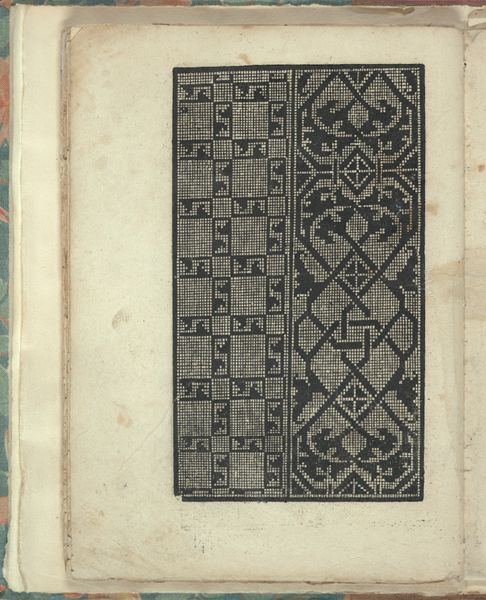
Opera Nova Universali intitulata Corona di racammi, page 2 (verso) 1530
0:00
0:00
drawing, graphic-art, ornament, print, woodcut
#
drawing
#
graphic-art
#
ornament
#
medieval
# print
#
geometric
#
woodcut
#
decorative-art
Dimensions: Overall: 8 7/8 x 6 7/8 in. (22.5 x 17.5 cm)
Copyright: Public Domain
Curator: Before us is a page from Giovanni Andrea Vavassore’s "Opera Nova Universali intitulata Corona di racammi," printed in 1530. This is actually page two, displayed “verso”, or on the left, as it would appear within the book. It is a woodcut, and part of the decorative arts collection here at the Met. Editor: Well, my immediate impression is the intense visual labour involved in creating this—the intricacy is quite striking. Look at those precise, almost pixelated patterns. You can nearly see the artisan’s hand struggling to master the printing medium. Curator: Indeed. These "Corona di racammi"—or "Crowns of Embroidery"—were essentially pattern books intended for lacemakers and embroiderers. Their importance lies in their direct impact on the production of textiles and clothing of the period. Editor: So, not high art in the conventional sense. I imagine its historical impact resonates far beyond the gallery. Consider the labour practices implicit in the craft. Who were these artisans adopting these designs? What were the social and economic conditions that dictated how these patterns were applied, replicated, and transformed across different communities? Curator: Exactly. The book’s accessibility meant these designs, initially conceived within Italian circles, became part of the broader visual language, adapted by craftspeople across Europe. These designs offered practical applications, suggesting ways artisans could diversify and sustain their livelihoods, responding to fluctuating market demands. Editor: And there’s also the cultural value placed upon this kind of ornamentation. These weren’t just abstract exercises; the symbols – grapes and decorative knots, for instance, carried significant cultural meanings. Examining them in relation to their social context is critical to comprehending their impact and influence. Curator: Precisely! This artwork illuminates a time when the creation and consumption of art were more intimately linked to everyday life and the social standing of those commissioning the work, showcasing the value placed on adornment, not just for the sake of aesthetics but as a marker of wealth and cultural belonging. Editor: It really highlights that these weren't just images in a book but active participants in a wider cultural exchange, each motif carrying echoes of social histories that continue to fascinate and resonate today. Curator: It brings into sharp relief how interconnected artistic production, manual skills, and economic factors all come into play to determine and to transform societies.
Comments
No comments
Be the first to comment and join the conversation on the ultimate creative platform.
